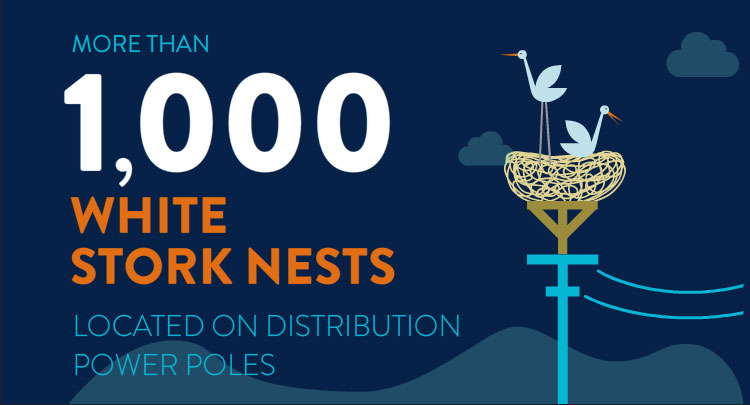
We are aware that our activities can greatly affect biodiversity, which is why our approach to business is based on the prevention of negative impacts on the environment, responsible management of natural resources and preservation of natural heritage. Accordingly, we establish partnerships with local communities, interested associations and state institutions, respecting all national and European regulations and laws.
HEP's thermal power plants are not located within the Natura 2000 ecological network or protected areas at the national level but within urbanized or industrial areas. Some production facilities are located near protected areas, for example TE-TO Zagreb CHP near the significant Savica landscape or TE-TO Osijek CHP near the border of the Mura-Drava Regional Park. A large number of HEP's hydropower plants are set within the Natura 2000 ecological network area, while some are completely or partially located in protected areas including national parks, nature parks, regional parks and areas of significant landscape. Also, slightly more than 5,000 kilometres of overhead medium-voltage lines stretches within the Natura 2000 conservation areas important for birds, which accounts for about 20 percent of the total length of HEP ODS's overhead medium-voltage lines.
The power grid can pose a threat to strictly protected species of birds due to electrocution from electric shock and collisions with individual grid elements. Legal obligations regarding the implementation of protective measures to reduce this threat are recognized within Natura 2000 areas of conservation important for birds. On the island of Cres, within the Lonjsko Polje Nature Park and the Kopački rit Nature Park, individual line sections are protected by applying long-term solutions - insulated conductors and installation of insulating equipment.
On the artificial island built on the HE Varaždin reservoir, favourable conditions for the nesting of the common tern (Sterna hirundo) are maintained, which is why an electric fence has been installed to prevent otters from entering the island. Fish passes are regularly improved, and constant attention is paid to the protection of white storks, with activities including the replacement or repair of nest supports on HEP ODS poles.
A more detailed description of our biodiversity protection-related activities can be found in sustainability reports.